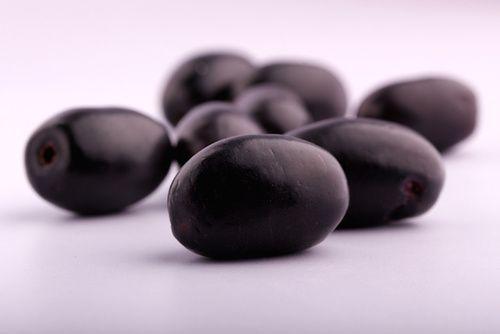Il crest, fruit native to the Indian subcontinent, is rich in Vitamins, especially the C, and is used for regulate blood pressure and blood sugar levels. Let's find out better.
> Calories, nutritional values and properties of jambul

Description of the fruit
About fruits considered "superfoods”, A term used in the English-speaking world to indicate foods that have a positive impact on health above average, why not mention the even less known jambul?
It originates from the Indian subcontinent and is produced by a evergreen blueberry (Syzygium cumini). Outside the territories of origin it is often considered an invasive species and is not marketed, while it is common to find its fruits displayed in the local markets of Asian countries: these are oblong berries, black when ripe and rich in purplish juice that colors so intense tongue and teeth.
Jambul, ally of
Circulatory system, oral cavity, general well-being, liver, memory.
Calories, nutritional values and properties of jambul
The jambul contains 60 kcal per 100 g.
It has a hardly describable flavor, a mixture of sweet, astringent and sour, not entirely palatable at first, which the Indians define as "metallic". So why is it so widely consumed? Quickly said: it is a fruit rich in vitamins, especially the C, used for regulate blood pressure and blood sugar levels thanks to a glucoside called jambolina; it also has excellent levels of phenols, flavonoids, anthocyanins, essential oils, iron and magnesium.
According to Ayurveda it is excellent in case of diabetes, anemia, weakness; it helps memory and fights inappetence, stomatitis, problems of the oral cavity. Added to these are kidney problems, acidity, heart problems and low melanin levels. There are also studies showing its ability to protect against radiation damage to DNA. A real pharmacy hidden in a berry!
Discover all the natural remedies to regulate blood pressure

Contraindications of jambul
Two precautions: do not take it on an empty stomach and do not mix it with milk.
Curiosity
Rama, the protagonist of the Ramayana, lived in exile for fourteen years eating jambul, and even the color of Krishna's skin is compared to the indigo color produced by the fruit.
In Suriname, women immerse themselves in a bath of jambul leaves and berries immediately after giving birth to restore the vagina.
How to eat jambul
Both the berries (including seed), both the leaves, be it bark, Both roots. The berries, as well as eaten fresh, are also used to produce alcohol (especially vodka al gusto di jambul). They also produce juices, flavored vinegars, jams, syrups, ice creams and sorbets.
READ MORE
The properties, benefits and contraindications of the carom fruit
| Ishafoundation.org


























